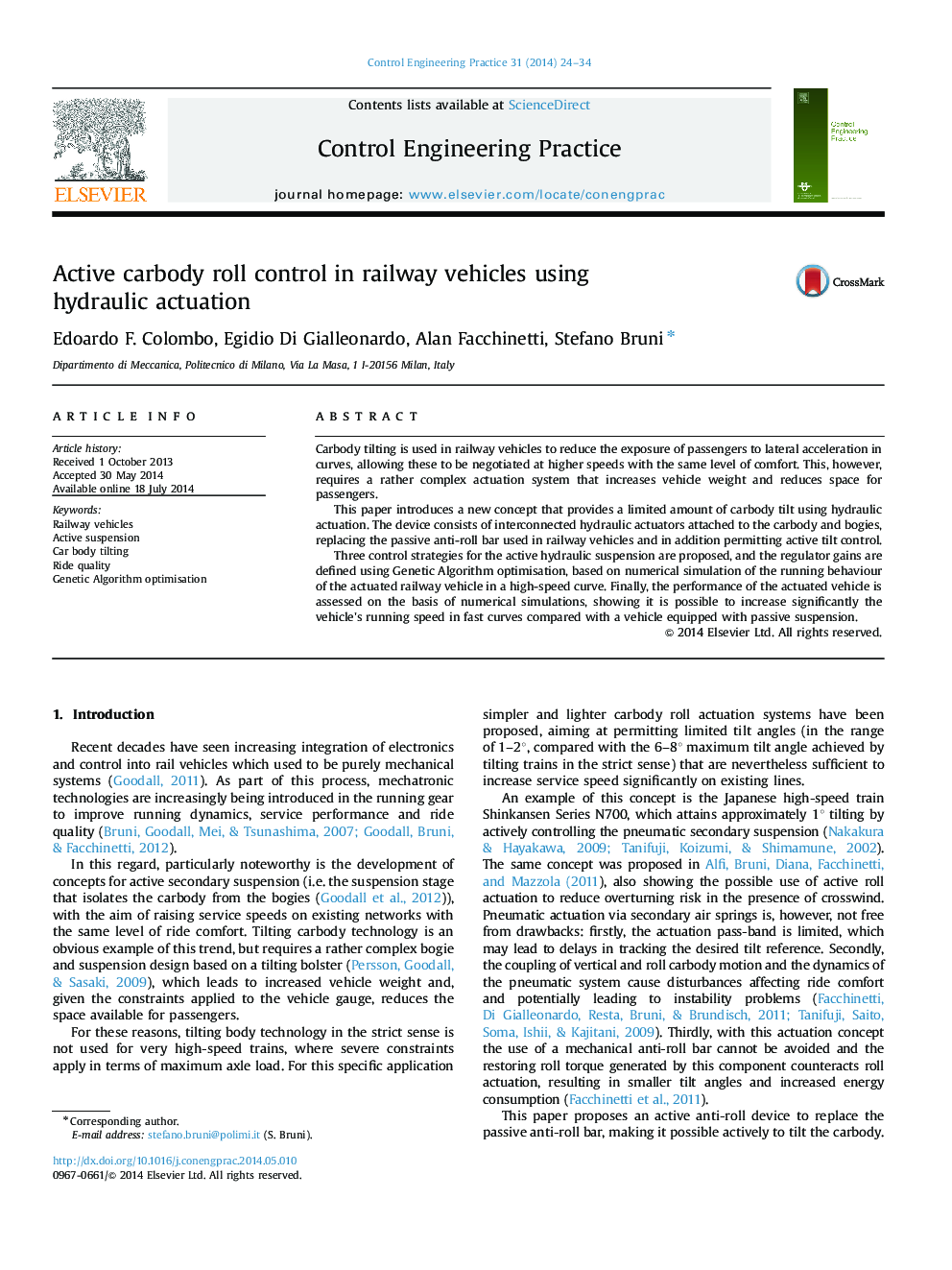| کد مقاله | کد نشریه | سال انتشار | مقاله انگلیسی | نسخه تمام متن |
|---|---|---|---|---|
| 699526 | 1460715 | 2014 | 11 صفحه PDF | دانلود رایگان |
• A new concept for car body tilting in high-speed railway vehicles is presented.
• It is based on interconnected hydraulic actuators replacing the anti-roll bar.
• Three control strategies are proposed for the active suspension.
• The regulator gains are defined using Genetic Algorithm optimisation.
• Simulation results show the potential for speed increase from 300 to 340 km/h.
Carbody tilting is used in railway vehicles to reduce the exposure of passengers to lateral acceleration in curves, allowing these to be negotiated at higher speeds with the same level of comfort. This, however, requires a rather complex actuation system that increases vehicle weight and reduces space for passengers.This paper introduces a new concept that provides a limited amount of carbody tilt using hydraulic actuation. The device consists of interconnected hydraulic actuators attached to the carbody and bogies, replacing the passive anti-roll bar used in railway vehicles and in addition permitting active tilt control.Three control strategies for the active hydraulic suspension are proposed, and the regulator gains are defined using Genetic Algorithm optimisation, based on numerical simulation of the running behaviour of the actuated railway vehicle in a high-speed curve. Finally, the performance of the actuated vehicle is assessed on the basis of numerical simulations, showing it is possible to increase significantly the vehicle׳s running speed in fast curves compared with a vehicle equipped with passive suspension.
Journal: Control Engineering Practice - Volume 31, October 2014, Pages 24–34
